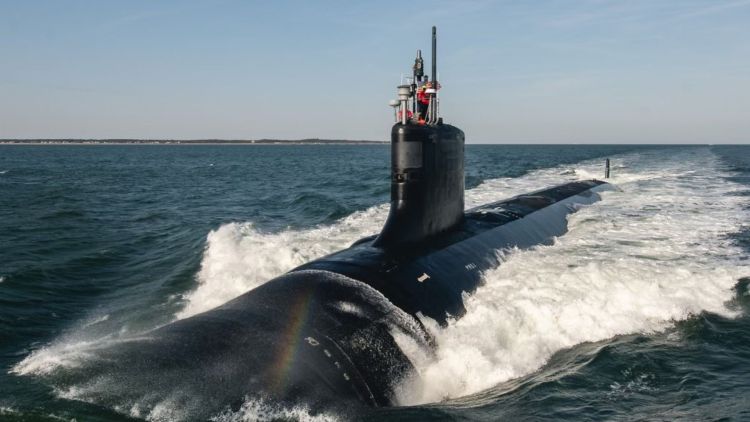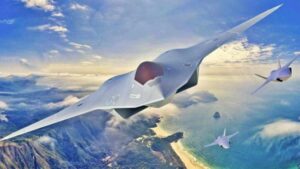The US Navy’s Virginia-class submarines have long been hailed as one of the most versatile and powerful tools in America’s defense arsenal.
Designed to tackle a variety of missions, from anti-submarine warfare to special operations, these subs are the Navy’s equivalent of a Swiss Army knife.
But as impressive as they are, the Virginia-class submarine program is running into some serious financial trouble.
The program is now projected to exceed its budget by a staggering $17 billion through 2030. That’s a massive shortfall for a project that’s already costing around $184 billion.
And it’s not just about the dollars; the delays and overruns are raising questions about the Navy’s overall shipbuilding strategy, as well as its ability to stay ahead of growing global threats.
Let’s break down what’s happening with the Virginia-class submarines, why they’re so important, and what the future holds for this crucial defense program. Here’s our thoughts on the matter.
Why Is the Virginia-Class Program Over Budget?
First off, let’s get one thing straight: the Virginia-class program isn’t new. These submarines have been a staple of the US Navy for over two decades (in commission since ’04), with the goal of maintaining a fleet that can adapt to various threats.
However, building and maintaining these submarines has proven far more expensive than originally planned.
According to Representative Ken Calvert, chairman of the House Defense Appropriations Subcommittee, the Navy and shipbuilders have known about this budget gap for at least 18 months.
“It’s clear that the Navy and shipbuilders have known about this shortfall for at least 18 months,” said Calvert last Thursday, September 19).
Yet, Congress was only informed recently, which has raised some eyebrows on Capitol Hill.
Calvert didn’t mince words, accusing the Navy of lacking transparency and mismanaging multibillion-dollar programs.
He also noted that delays in the program have pushed completion timelines back by two to three years, further compounding the problem.
“We are now working with OMB (Office of Management and Budget), the shipbuilders, and the Navy to better understand the $1.95 billion supplemental funding request and the SAWS (Shipbuilding Accountability and Workforce Support) proposal. I am skeptical that either will successfully get these fiscal year 2024 Virginia submarines under contract,” Calvert added.
The key issue here seems to be underestimating the costs involved. Rising expenses in materials, labor, and other operational costs have ballooned, leaving the Navy scrambling to close the gap.
If the Navy can’t figure out how to trim some of these expenditures, we could be looking at a final price tag even higher than the projected $184 billion.
USS Minnesota (SSN-783), an Virginia-class attack submarine, under construction at Huntington Ingalls Newport News Shipbuilding, 2012. (DVIDS)
Delays and Their Consequences
Now, you might be wondering, how does this impact the Navy’s overall strategy?
Well, these delays aren’t just minor hiccups—they’re causing real problems, both at home and abroad.
The Virginia-class submarines are supposed to provide the US with a critical advantage, particularly in any potential conflict with China. These submarines are armed with torpedoes, land-attack missiles, and, soon, anti-ship Tomahawk cruise missiles.
However, with production delays stretching delivery dates by 24 to 36 months past their contracted deadlines, the Navy’s ability to maintain its edge could be compromised.
Another looming issue is the AUKUS partnership, an agreement between the US, Australia, and the United Kingdom.
The US is supposed to sell Australia up to five Virginia-class subs starting around 2032. But with delays already piling up, meeting that timeline is looking less and less likely.
If the Navy can’t get the program back on track, it could put a major strain on this strategic alliance.
Looking Back: A History of Cost Overruns
This isn’t the first time the Virginia-class program has run into financial trouble. In fact, just earlier this month, the White House requested an additional $1.95 billion to cover a previous funding gap for two submarines.
The root of that shortfall? A mix of inflation, supply chain disruptions, and post-pandemic economic fallout.
The Navy’s budget estimates for the Virginia-class submarines were made long before COVID-19 upended global markets.
Costs for materials and labor skyrocketed, and military contractors faced chaos in supply chains, driving up prices even more.
That request for an extra $1.95 billion was seen as a necessity, not a luxury, to keep the program on track—which was questioned by the House Defense Appropriations Subcommittee.
Why These Subs Are So Important
So, with all this financial chaos, why does the Virginia-class submarine program matter so much?
The answer is simple: these submarines are a cornerstone of US military readiness. They are designed to perform a wide variety of missions, from hunting down enemy submarines to launching precision strikes on land targets.
The Virginia-class submarines are also vital for special operations, with some submarines being outfitted for seabed warfare—a critical capability as the world’s oceans become contested.
More importantly, they’re key to maintaining US naval dominance, especially in areas like the Pacific, where tensions with China continue to rise.
These subs act as both a deterrent and a first line of defense in case of conflict.
Delaying their production isn’t just a budget issue—it’s a potential risk to US strategic interests.
Can the Navy Turn Things Around?
Secretary of the Navy Del Toro addresses an audience during the recent commissioning ceremony of USS New Jersey (SSN-796) on Sept. 14, 2024. (240914-N-OF444-2034/DVIDS)
The Navy knows it has a problem. In response to the growing concerns over cost overruns, Navy Secretary Carlos Del Toro has been advocating for improvements in the maritime industrial base.
“Our submarines truly are the apex predators of the sea, both technically and quantitatively superior to any submarines fielded by our adversaries,” Del Toro told the House Defense Appropriations Subcommittee. “Submarines provide our Navy and our nation a critical, asymmetric advantage—which is why they have and will remain our number one acquisition priority.”
The Navy has also set up an independent Naval Cost Agency to improve cost estimations, and there’s been talk of modernizing ship design processes and investing in new facilities to streamline production.
But the clock is ticking.
If the Navy can’t resolve these issues soon, the Virginia-class program could fall even further behind schedule, with costs continuing to spiral out of control.
There’s also the risk that political battles over defense spending could make things worse.
Every dollar counts, and while defense is a priority, Congress has to weigh these expenses against other needs.
Final Thoughts
The $17 billion budget overrun in the Virginia-class submarine program is a clear sign that the Navy has some serious challenges to overcome.
Rising costs, delays, and political pressures all contribute to a situation that could potentially undermine US military readiness.
However, these submarines are far too important to simply let the program falter.
USS Hawaii (SSN 776), a Virginia-class submarine part of the AUKUS program, departs HMAS Stirling on Sept. 10, 2024. (DVIDS)
The Virginia-class subs are designed to be adaptable and versatile, giving the US a critical advantage in any future maritime conflict. As the Navy works to get the program back on track, the key will be finding the balance between fiscal responsibility and maintaining a robust defense capability.
At the end of the day, the question isn’t whether the Virginia-class submarines are worth the investment—they absolutely are.
The real challenge is ensuring they’re delivered on time and on budget so they can continue to serve as the backbone of the US Navy for years to come.
—
Disclaimer: SOFREP utilizes AI for image generation and article research. Occasionally, it’s like handing a chimpanzee the keys to your liquor cabinet. It’s not always perfect and if a mistake is made, we own up to it full stop. In a world where information comes at us in tidal waves, it is an important tool that helps us sift through the brass for live rounds.



